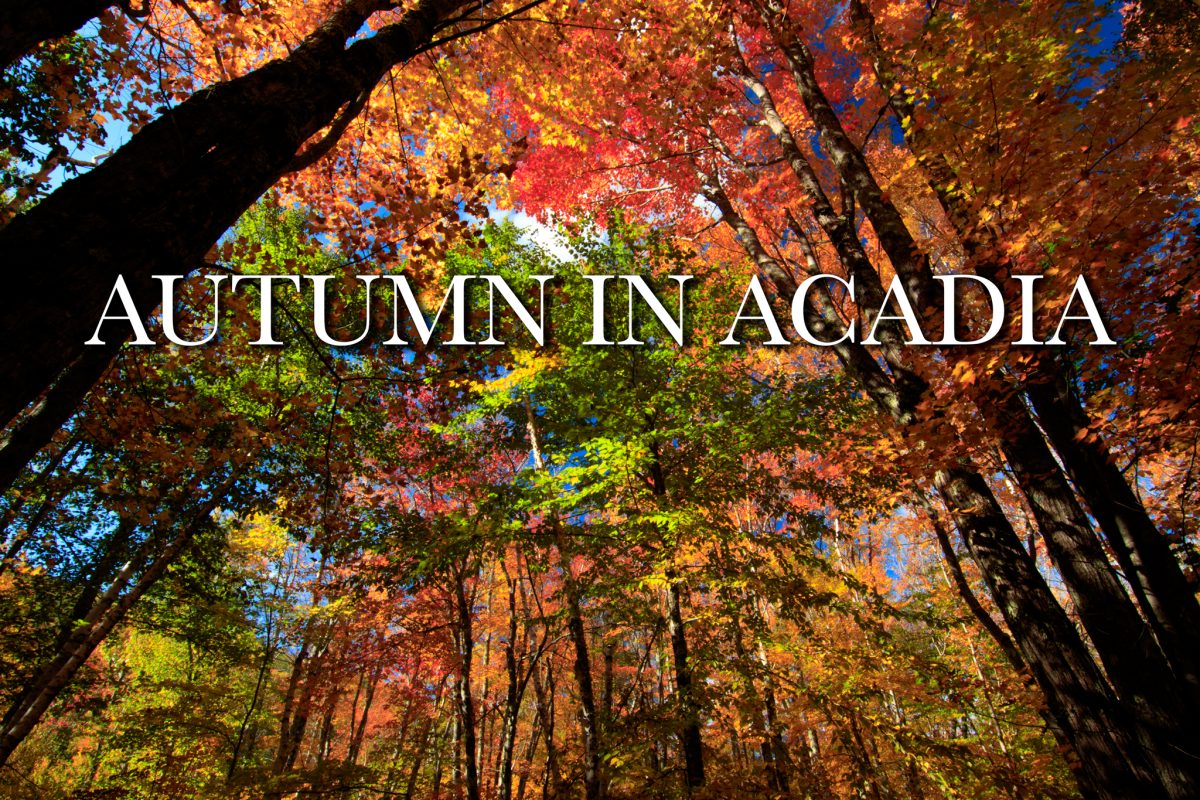Without a doubt, autumn is my favorite season. Not only do leaves turn shades of red, orange, and yellow normally impossible the rest of the year, but the very composition of the air seems to change. Even inhaling becomes more interesting. In fall, every breath feels like a bite out of a perfectly crisp apple.
Because autumn is my favorite season, a fall spent inside is painful to me. The last few years, I’ve spent more time typing term papers than in Acadia National Park, which is right in the backyard. As I hit the keys of my computer with an anxious fever, I gaze out the window at the changing colors. In New England, the grand finale of fall doesn’t last long.
While I can’t change the number of hours I must type (for now), I can take full advantage of the rest of the possible daylight hours for enjoying this glorious season. This last fall, I tried exactly that. This video is the result:
Communicating Beauty and its Dilemma
I had a huge shot list for this project: Multiple trails, different viewpoints, and special areas for certain times of day. I added to the list constantly with new ideas while witnessing the progression of fall.
Not only did I want to show the outstanding natural beauty of Acadia National Park—but I also wanted to show the plights obvious to someone who has spent three years living in Bar Harbor and studying conservation: the impact of people, cars, and cruise ships.
Overall, I hoped to capture more scenes communicating the deep paradox of the park. I also hoped to capture more of the breathtaking scenes planned out in my mind. Unfortunately, the number of peak autumn days is too short.
The Daylight Challenge
In autumn, available daylight wanes every day. On October 3rd, when I began shooting, the sun rose at 6:34am and set at 6:12pm. Fitting in shots before or after my 45 minute commute was a challenge, but my only option. On October 30th, the day I took the final time-lapse, daylight was cut by 1 hour and 19 minutes overall. By then, I no longer had enough time to visit, often hike to location, and set up to shoot during weekdays.
On top of the daylight challenge, my car also broke, a hard drive storing all my photos and time-lapses crashed, a mandatory conference in Pittsburgh drew me away from the best fall foliage weekend of the season, and I caught a terrible cold. The autumn gods tried to stop me from capturing their beauty.
Time Traveling
Each time-lapse sequence is shot at a different rate. Fast moving people or clouds mean less time between frames. Slower developing scenes mean the opposite. Due to my time limitations, my time-lapse sequences were on the quick end: sometimes as little as 2 seconds between frames and as much as 15 seconds.
I shot most sequences to result in at least 7 seconds of footage. It only takes 6 minutes of shooting for a 2-second shot sequence to result in a 7-second clip played back at 24 frames per second. If I waited 15 seconds between shots, the 7-second sequence would take 42 minutes to capture.
I commonly aimed for a 10-second or longer sequence if I had time. In the final film, most sequences benefited from the 10-second rule because I played them back at a faster rate than 24 frames per second, often close to 48 frames or more—taking that 10-second clip and making it around 5-seconds long.
Technical Information
Cameras: Canon 80D & t2i
Lenses: Tokina 11-16mm, Canon 24-70mm
No filters, no ramping programs. Compiled with LRTimelapse Personal License.
